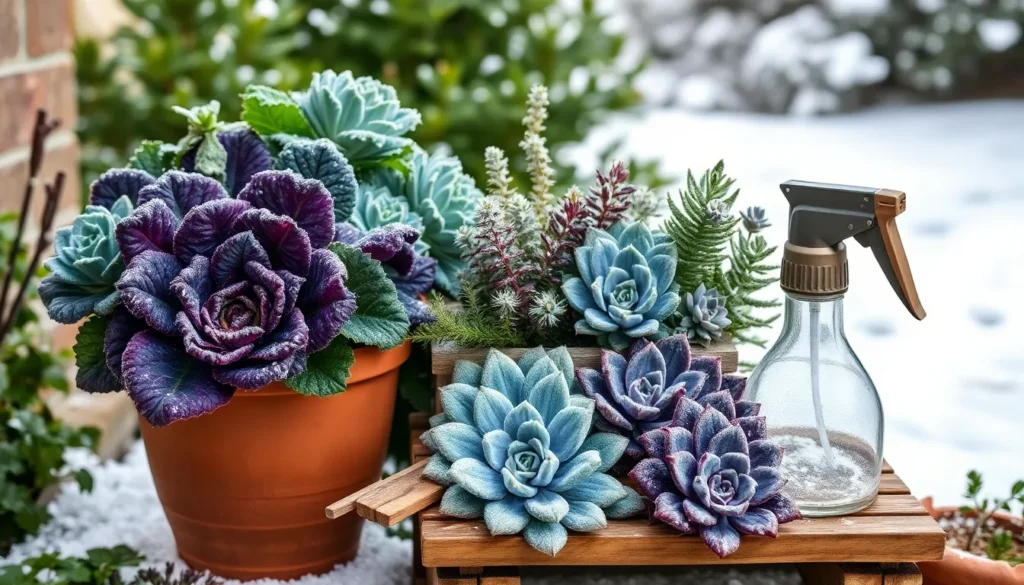As the days grow shorter and the crisp air heralds winter’s approach, it’s easy to think that our gardening duties might take a back seat. Yet, the chill of winter offers a unique opportunity to nurture your garden in ways that can set the stage for a vibrant spring awakening. Both novice and seasoned gardeners can find joy in the winter months by embracing a few essential practices that keep the garden thriving, even when nature seems to be in slumber.
Winter gardening doesn’t have to be daunting; in fact, it can be an exciting time to connect with your garden on a deeper level. Whether you’re just starting your gardening journey or you’ve been nurturing your green space for years, this season can reveal a new perspective on plant care. In this article, you’ll discover ten essential practices that will not only protect your garden from the harshness of winter but also enrich the soil and prepare your plants for a lush comeback. From mulching to selecting the right winter-hardy plants, there’s something here for everyone to learn and apply.
This guide will walk you through practical tips tailored to maximize your garden’s potential during these colder months. You’ll learn how to use the season to your advantage, fostering resilience in your plants and maintaining the beauty of your garden all year round. As we delve into these winter gardening essentials, you’ll find that tending to your garden in the off-season can be as rewarding and fulfilling as the sunniest summer day. So, let’s roll up our sleeves and embrace the magic of winter gardening together.
Choosing Hardy Winter Plants

When selecting hardy winter plants, it’s essential to opt for varieties that can withstand the cold and potentially harsh conditions. Consider plants like hellebores, winter jasmine, and pansies that not only survive but thrive in winter months.
For beginners, starting with evergreens like boxwood or holly can provide structure and color all winter long. These plants require minimal care, needing only occasional watering if the ground isn’t frozen.
More experienced gardeners might explore the world of ornamental cabbages and kale, which add vibrant hues to the winter landscape. These plants benefit from well-drained soil and can be a striking addition to your winter beds or containers.
To maximize plant health, ensure you mulch around the base with organic material like bark or straw. This not only insulates the roots but also retains moisture, crucial during dry winter spells.
Preparing Your Garden for Frost

As temperatures begin to drop, it’s crucial to start preparing your garden for the impending frost. Begin by identifying vulnerable plants, such as tender perennials and annuals, which may need extra protection.
One effective method to protect these plants is to apply a layer of mulch around their base. Mulch helps to insulate the soil, retaining warmth and moisture, which can be lifesaving during unexpected cold snaps.
Consider using materials like straw, shredded leaves, or pine needles for mulching, as these are both effective and readily available. Aim for a mulch layer that’s about 2 to 4 inches thick to ensure optimal insulation.
In addition to mulching, you might want to cover sensitive plants with frost cloths or old blankets during frosty nights. These coverings help trap heat and create a buffer against the cold, increasing your plants’ chances of survival.
It’s also advisable to water your garden thoroughly before an expected frost. Moist soil retains heat better than dry soil, providing an extra layer of protection for plant roots.
For gardeners with more experience, consider building cold frames or cloches to extend the growing season for some crops. These structures can be made from recycled materials and offer a warmer microclimate for plants during frosty periods.
Essential Winter Mulching Techniques
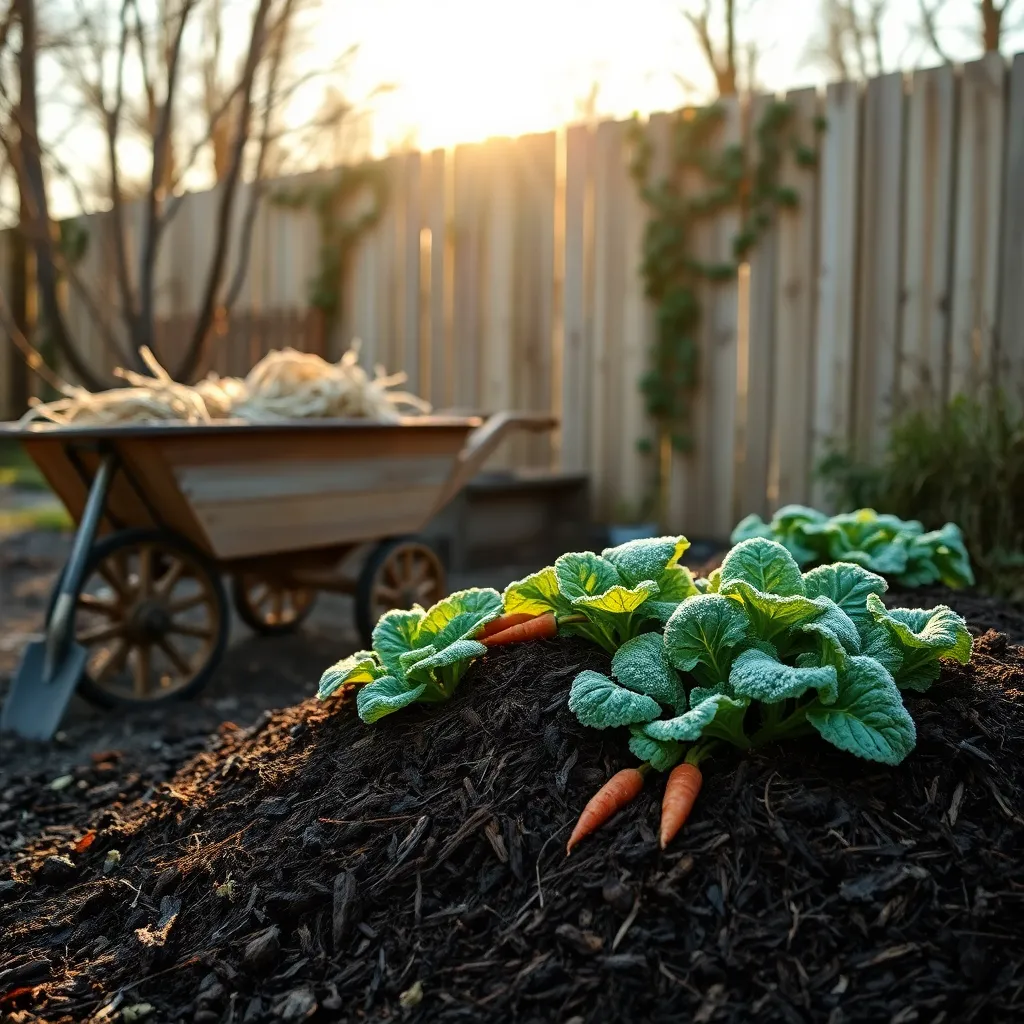
Winter mulching is a crucial step to protect your garden from the harsh cold. By insulating the soil, mulch prevents temperature fluctuations that can damage plant roots.
Start by choosing the right mulch material for your garden needs. Organic options like straw, wood chips, or shredded leaves are excellent for adding nutrients back into the soil as they decompose.
Apply a layer of mulch that is about two to four inches thick over the soil. This thickness is optimal for insulation and moisture retention, preventing the ground from freezing too deeply.
For gardeners looking to go a step further, consider using a double layer of mulch. This involves placing a coarser mulch on the bottom and a finer mulch on top, which can offer superior protection and moisture control.
Ensure that mulch is kept a few inches away from the stems of plants to prevent rot. This simple step can save your plants from unnecessary harm during the winter months.
Advanced gardeners might experiment with mulch alternatives like landscape fabric beneath the mulch. This technique can enhance weed suppression and further stabilize soil temperatures.
Remember, mulch not only helps to regulate soil temperature but also conserves soil moisture. This is particularly beneficial in preventing winter desiccation, an issue that can affect many perennial plants.
Efficient Winter Watering Tips
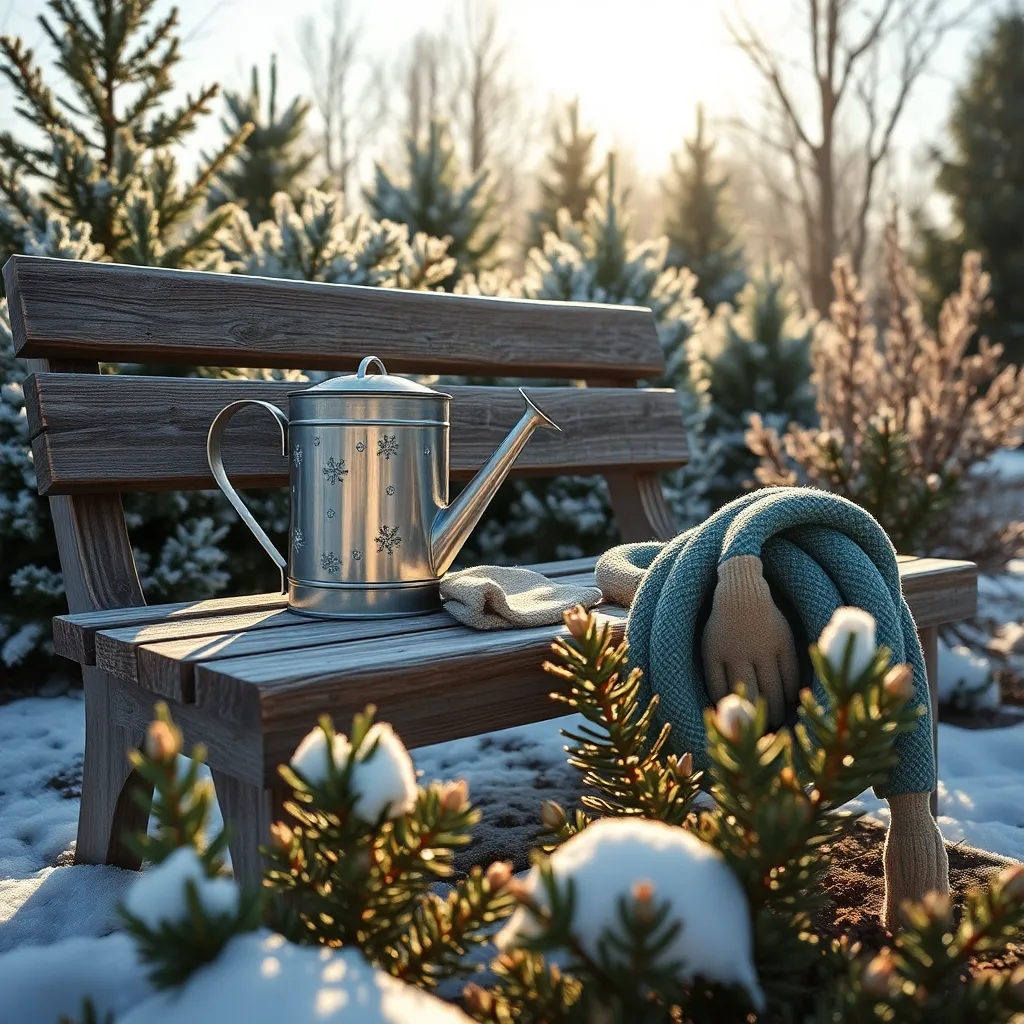
Winter presents unique challenges for keeping your garden hydrated, but it is crucial for plant survival. Start by assessing your plants’ water needs, as some may require more moisture than others, even in colder months.
It’s important to remember that even dormant plants need water, especially during dry spells. A general rule of thumb is to water when the top inch of soil feels dry, ensuring the water reaches the roots.
For efficient winter watering, consider using a soaker hose or drip irrigation system. These methods deliver water directly to the base of the plants, minimizing evaporation and ensuring deep penetration.
On particularly cold days, water your garden during the warmest part of the day to prevent freezing. Using lukewarm water can also help, as it gently warms the soil and reduces shock to the plants.
For beginner gardeners, it’s helpful to monitor the weather and avoid watering just before a freeze. Advanced gardeners might use moisture meters to accurately measure soil conditions, adjusting their watering schedule accordingly.
Remember to adjust your watering frequency based on the type of soil in your garden. Clay soils retain moisture longer, while sandy soils may require more frequent watering to maintain adequate hydration levels.
Protecting Plants with Covers
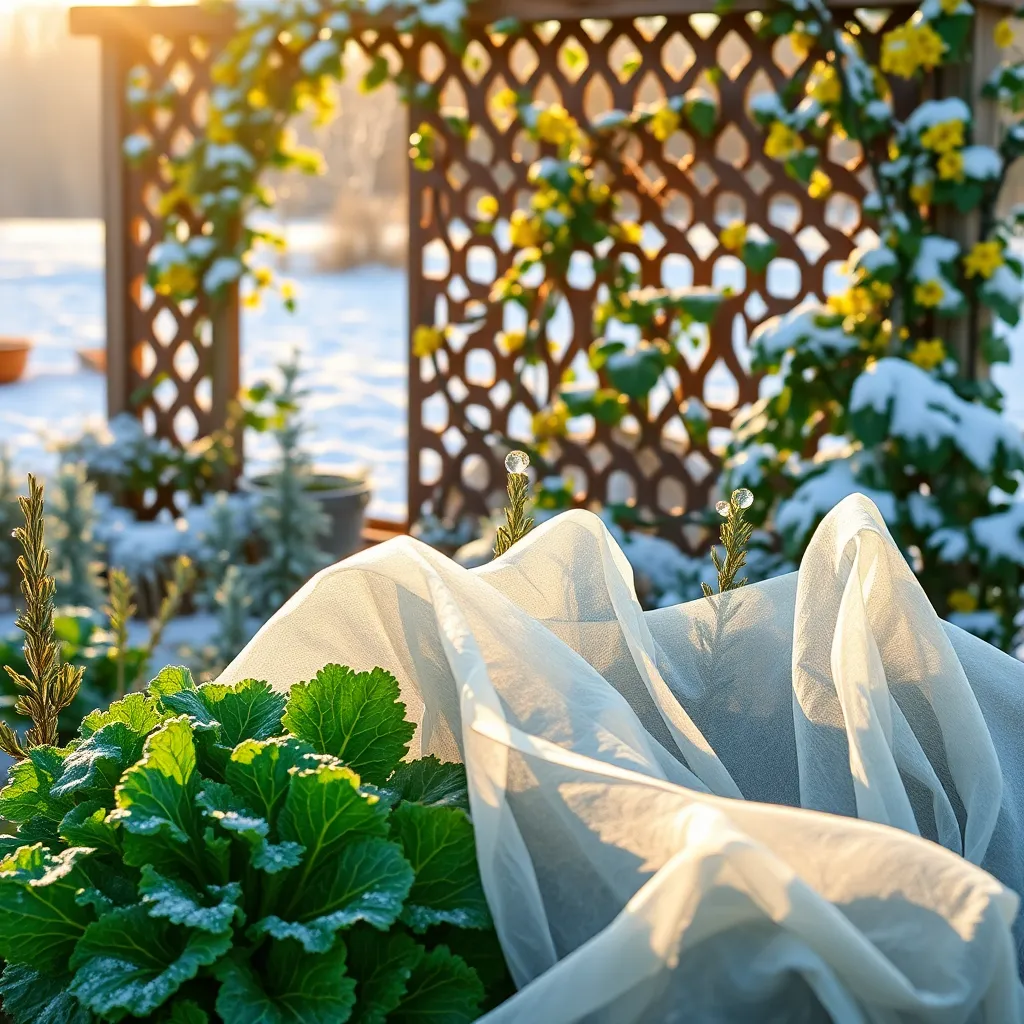
Protecting your plants with covers is an essential winter gardening task that helps them survive harsh conditions. Using covers can shield plants from frost, wind, and even pests that are more active during milder winter days.
One of the most effective covers is the floating row cover, which is lightweight and allows sunlight and moisture to penetrate while providing frost protection. Secure the edges with rocks or garden staples to prevent the wind from blowing them away.
For potted plants, consider using burlap or frost blankets to wrap around the containers. This method provides insulation against freezing temperatures and can be particularly useful for sensitive plants like citrus or tropical varieties.
Advanced gardeners might use cold frames, which are mini-greenhouses that trap heat and protect plants from extreme weather. Build your own using old windows or buy pre-made models to extend your growing season even in winter.
Winter Composting Best Practices
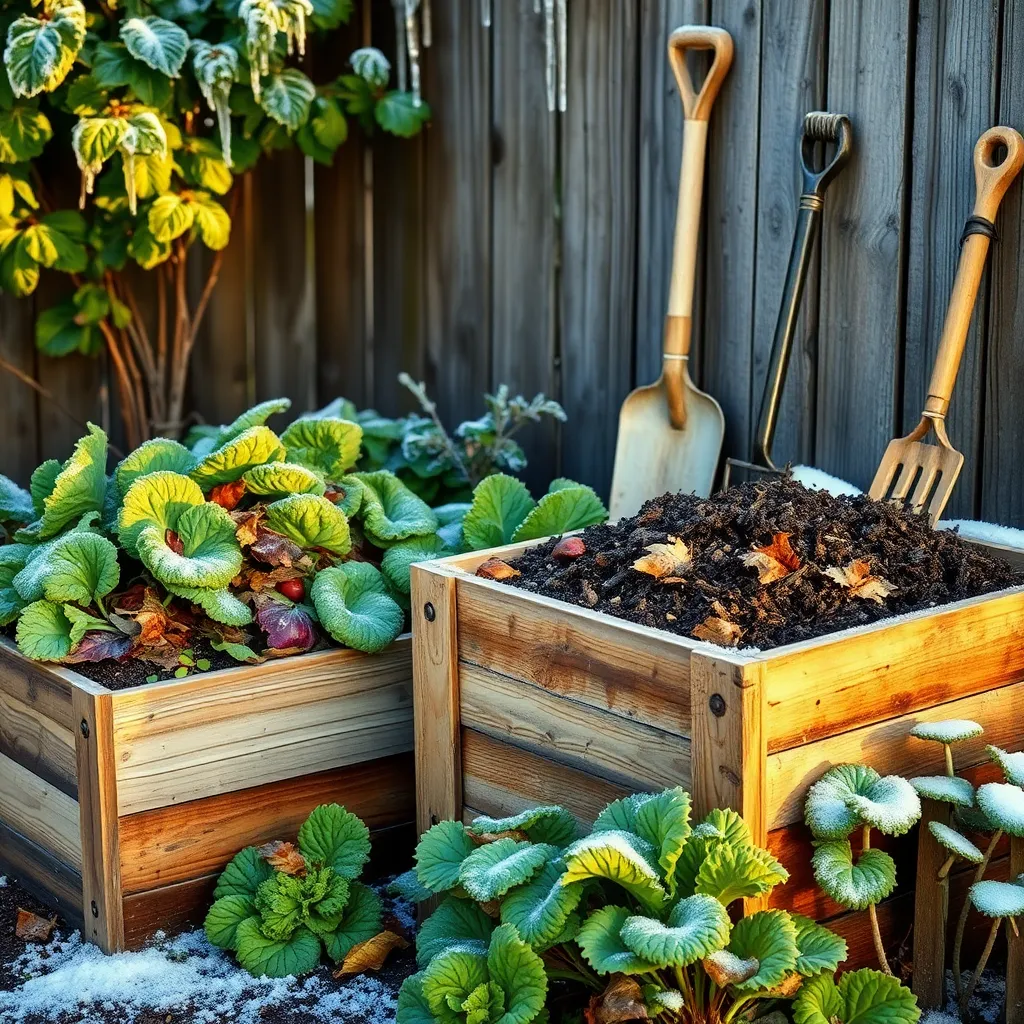
Winter composting is an excellent way to continue building soil health even when temperatures drop. While the colder climate slows down decomposition, there are strategies to maintain an active compost pile.
To keep your compost pile working in the winter, it’s crucial to balance carbon and nitrogen-rich materials effectively. Use a mix of brown materials like dried leaves and shredded paper with green materials such as food scraps and grass clippings.
Insulating your compost pile can help maintain internal temperatures, aiding in decomposition. Surround the pile with straw bales or a tarp to retain heat, which can be particularly beneficial in snowy regions.
Turning the compost regularly is another effective method to keep it active. This action introduces oxygen, which is essential for the microorganisms to break down organic matter even in colder months.
For those with limited space, consider using a compost tumbler, which is easier to manage in winter conditions. Tumblers can be rotated to mix the contents without the need for a pitchfork, making them perfect for urban or small-space gardeners.
Remember to keep the compost moist, as dry materials can halt the decomposition process. If your pile is too dry, add water sparingly, ensuring it stays damp like a wrung-out sponge.
- Tip: Add a layer of soil to your compost pile to introduce new microorganisms that can jumpstart the decomposition process.
- Tip: Avoid adding large branches or woody materials in winter, as they take longer to break down and can stall the composting process.
- Tip: Use a compost thermometer to monitor the temperature and ensure the pile remains active.
By implementing these winter composting practices, gardeners can continue to enrich their soil, preparing for a thriving garden come spring. Even in the coldest months, with the right approach, your compost can remain an active, vital component of your gardening routine.
Garden Tool Maintenance in Winter

Winter is the perfect time to focus on garden tool maintenance, ensuring your tools are in optimal condition for the upcoming growing season. Start by thoroughly cleaning all your tools with a wire brush or steel wool to remove dirt and rust.
After cleaning, it’s important to sharpen the blades of pruners, shears, and other cutting tools. Use a sharpening stone or file, maintaining the original angle of the blade, to enhance the efficiency of your tools.
Regularly oiling metal parts will help prevent rust and prolong the life of your tools. Apply a light coat of machine oil or WD-40 to hinges and blades, and store your tools in a dry location to avoid moisture damage.
For wooden handles, sand any rough areas to prevent splinters and apply linseed oil to keep the wood from drying out and cracking. These simple steps can greatly extend the life of your tools and ensure they are ready to work efficiently when spring arrives.
Indoor Gardening for Cold Months
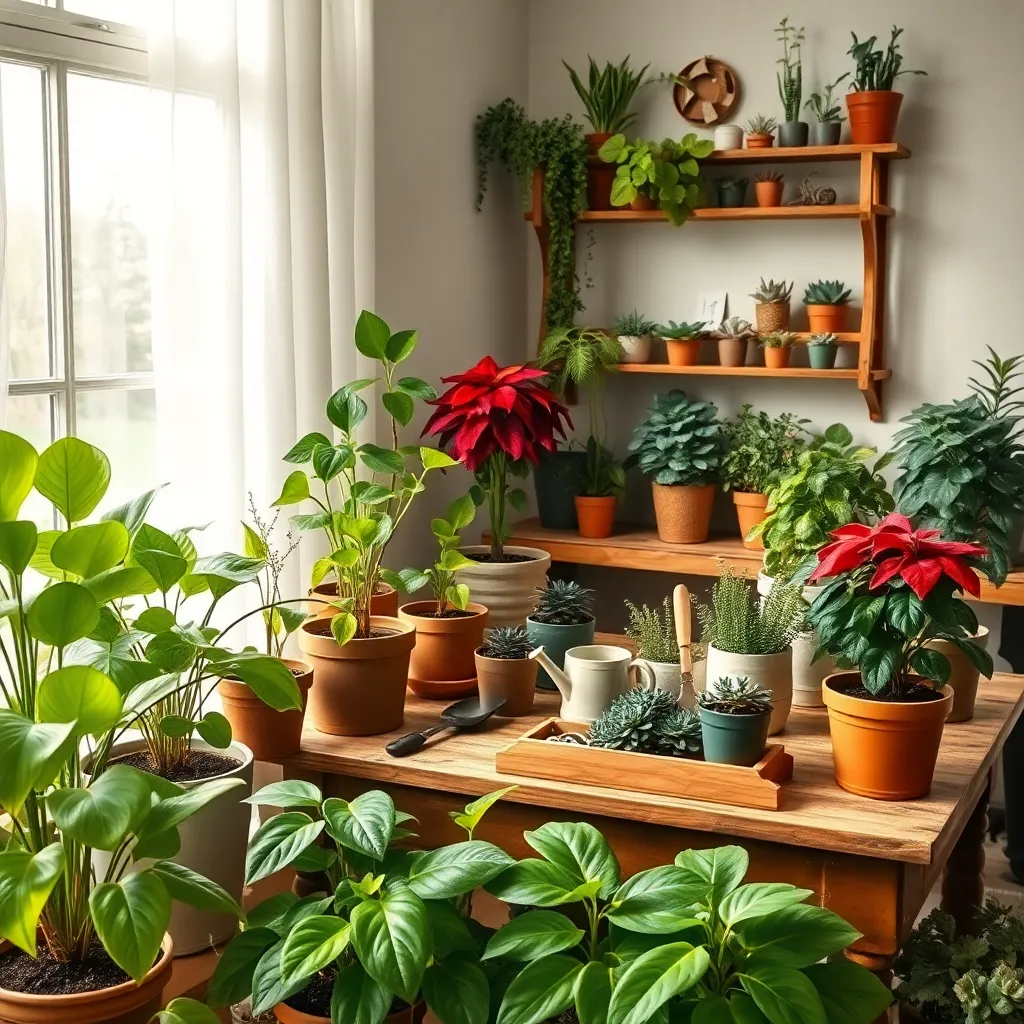
Indoor gardening during the cold months can be both rewarding and essential for maintaining greenery. Starting with easy-care plants like pothos or snake plants can boost confidence for beginners and add life to your space.
Lighting is a critical factor; position plants near south or east-facing windows to maximize natural light. If natural light is insufficient, consider using grow lights to mimic sunlight and promote healthy growth.
Regular watering is vital, but it’s important not to overdo it. A good rule of thumb is to let the top inch of soil dry out before watering again, as most indoor plants prefer this regimen.
Humidity levels can drop indoors during winter, so misting plants or using a humidifier can be beneficial. Grouping plants together can also help create a microclimate that retains moisture, aiding in their survival through the season.
For more advanced gardeners, consider experimenting with plant propagation during the winter months. Techniques such as rooting pothos cuttings in water can be a fun way to expand your indoor garden without much effort.
Winter Pest and Disease Management
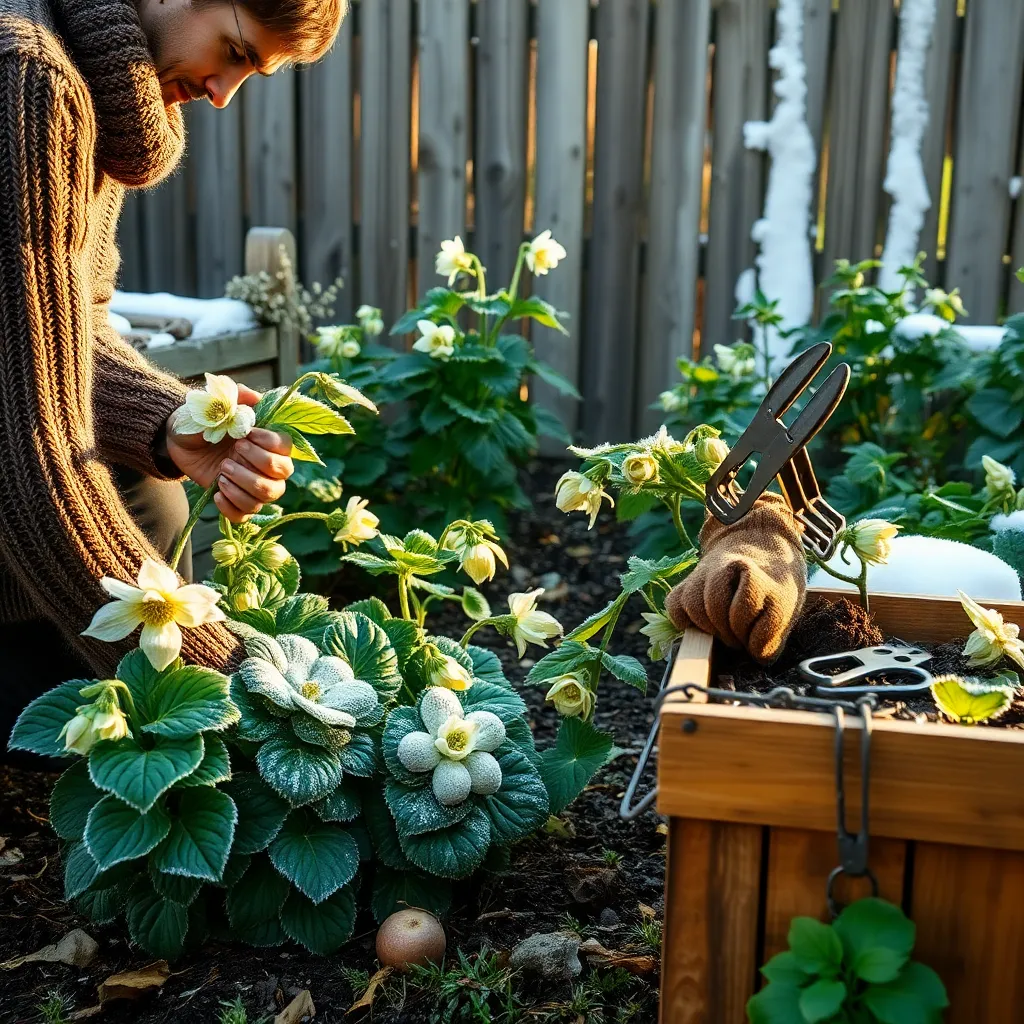
Winter presents unique challenges for gardeners, particularly in managing pests and diseases. Despite the cold, some pests and diseases continue to thrive, making it essential to stay vigilant and proactive.
To keep pests at bay, regularly inspect your plants for signs of trouble, such as discolored leaves or unusual spots. Use a magnifying glass to spot small pests like aphids or spider mites, which can be more prevalent indoors during winter months.
Implementing preventive measures is crucial; consider adding a layer of mulch to your garden beds to protect the roots and deter surface pests. For indoor plants, maintain a balance in humidity to prevent fungal diseases, which thrive in overly moist conditions.
For those dealing with persistent issues, homemade remedies can be effective. A simple solution of water and mild soap can help control many soft-bodied insects without the need for chemicals.
Experienced gardeners may want to rotate their plants to different locations to disrupt pest life cycles and reduce the risk of disease spread. Additionally, regularly clean gardening tools and pots to prevent the transfer of pathogens between plants.
By staying attentive and implementing these strategies, you can minimize winter pest and disease issues, ensuring your garden remains healthy and thriving into the spring. Remember, consistent care and monitoring are key to overcoming winter challenges in the garden.
Planning for Spring Garden Success
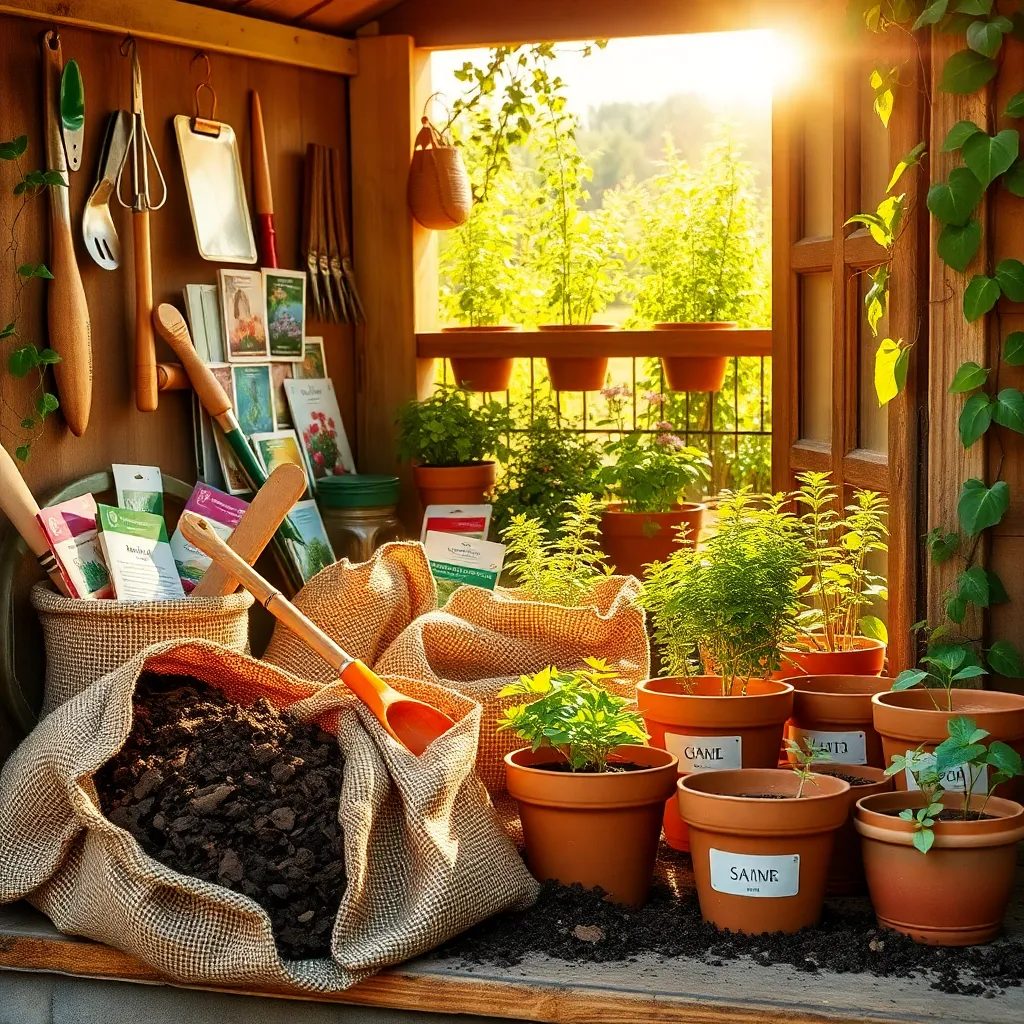
As winter winds down, it’s the perfect time to start planning for a thriving spring garden. Begin by assessing your garden layout and identifying which areas receive the most sunlight, as this will guide your planting decisions.
Consider the type of soil in your garden, as different plants thrive in different conditions. Amend your soil with organic matter like compost to improve its structure and fertility, ensuring a nutrient-rich environment for your spring plants.
Choose plant varieties that are suited to your climate and garden conditions, focusing on both flowers and vegetables that can handle the transition from cool to warm weather. Seed packets often provide valuable information on the ideal planting time and conditions, so use these as a guide when mapping out your garden.
For those looking to get a head start, consider starting seeds indoors to give your plants a longer growing season. Use seed trays and a high-quality, well-draining potting mix, and place the trays in a warm, sunny spot or under grow lights for optimal growth.
Finally, keep a gardening journal to track your planting schedule, growth progress, and any challenges you encounter. This not only helps with planning and organization but also allows you to learn and adapt your gardening techniques over time, ensuring ongoing success.
Conclusion: Growing Success with These Plants
As the chill of winter envelops us, it becomes essential to nurture not only our gardens but also our relationships. Throughout this article, we explored ten key concepts to help you cultivate a thriving partnership during the colder months: communication, quality time, empathy, shared hobbies, support, appreciation, patience, personal space, conflict resolution, and affection. These essentials are your toolkit to maintain warmth and connection with your partner, even when the weather outside is frosty.
Take an immediate next step by choosing one concept to focus on today—perhaps setting aside a distraction-free evening with your partner or expressing gratitude for their presence in your life. Implementing just one change can create a ripple effect of positivity and growth.
To ensure these insights are always within reach, bookmark this article for ongoing guidance and inspiration. Remember, relationships are like gardens—they require consistent care and attention to flourish. By embracing these winter essentials, you’re not only nurturing your connection today but also sowing seeds for future success. Keep these principles close, and watch as your relationship blossoms, season after season.

